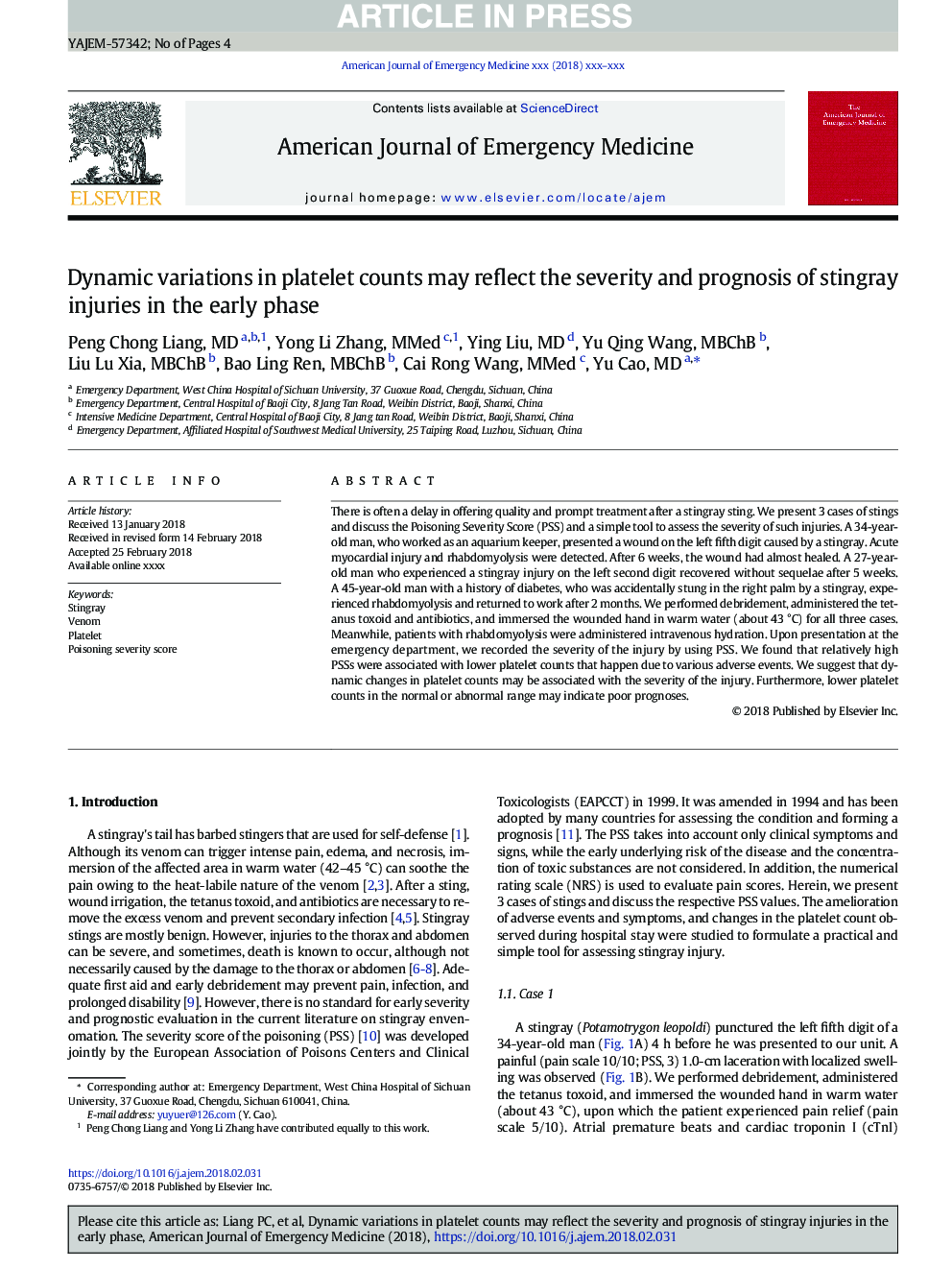| Article ID | Journal | Published Year | Pages | File Type |
|---|---|---|---|---|
| 8717230 | The American Journal of Emergency Medicine | 2018 | 4 Pages |
Abstract
There is often a delay in offering quality and prompt treatment after a stingray sting. We present 3 cases of stings and discuss the Poisoning Severity Score (PSS) and a simple tool to assess the severity of such injuries. A 34-year-old man, who worked as an aquarium keeper, presented a wound on the left fifth digit caused by a stingray. Acute myocardial injury and rhabdomyolysis were detected. After 6 weeks, the wound had almost healed. A 27-year-old man who experienced a stingray injury on the left second digit recovered without sequelae after 5 weeks. A 45-year-old man with a history of diabetes, who was accidentally stung in the right palm by a stingray, experienced rhabdomyolysis and returned to work after 2 months. We performed debridement, administered the tetanus toxoid and antibiotics, and immersed the wounded hand in warm water (about 43 °C) for all three cases. Meanwhile, patients with rhabdomyolysis were administered intravenous hydration. Upon presentation at the emergency department, we recorded the severity of the injury by using PSS. We found that relatively high PSSs were associated with lower platelet counts that happen due to various adverse events. We suggest that dynamic changes in platelet counts may be associated with the severity of the injury. Furthermore, lower platelet counts in the normal or abnormal range may indicate poor prognoses.
Related Topics
Health Sciences
Medicine and Dentistry
Emergency Medicine
Authors
Peng Chong MD, Yong Li MMed, Ying MD, Yu Qing MBChB, Liu Lu MBChB, Bao Ling MBChB, Cai Rong MMed, Yu MD,
